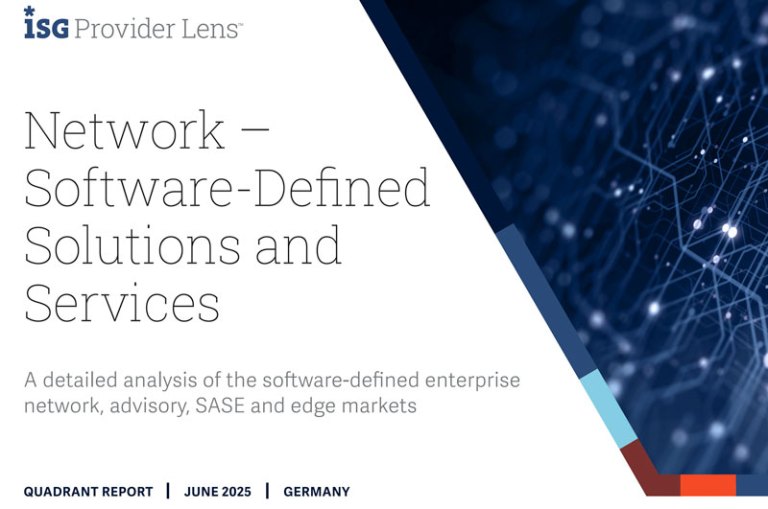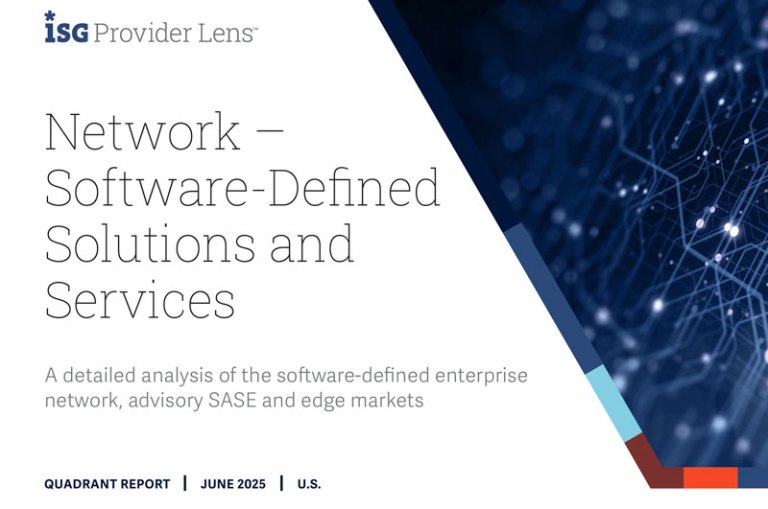As businesses increasingly shift operations to the cloud, seamless connectivity is critical. SD-WAN (Software-Defined Wide Area Networking) simplifies cloud integration while optimizing network performance, security, and scalability. It ensures that your network can support growing cloud demands—onboarding and managing multiple cloud-based applications efficiently while maintaining peak performance and security.
The Role of SD-WAN in Cloud Integration
SD-WAN eases cloud adoption by optimizing network paths, routing traffic efficiently, and reducing lag for near-instantaneous data delivery. It provides a user-friendly interface for managing network settings and policies, simplifying operations for distributed enterprises.
With centralized orchestration, organizations can deploy additional sites faster and enforce uniform security policies across locations. This ensures data protection and regulatory compliance.
How SD-WAN Streamlines Cloud Adoption:
- Traffic Optimization: Routes data through the most efficient paths, minimizing latency and improving speed.
- Centralized Control: Manage all network policies and cloud connections from a single platform.
- Scalability: Easily add new locations and user applications without complex reconfigurations.
- Cost Savings: Reduces reliance on expensive MPLS links by leveraging more affordable internet connections.
Key Cloud Integration Features of SD-WAN
SD-WAN offers advanced cloud integration features that simplify network management and enhance performance.
Application-Aware Routing
SD-WAN prioritizes mission-critical applications in healthcare, finance, or telecommunications to perform at the highest level, including:
- Intelligent Traffic Routing: Real-time monitoring adjusts traffic paths based on network conditions.
- Reduced Latency: Critical applications get the bandwidth they need for seamless operations.
For example, Video calls are prioritized over large file downloads prioritized over large file downloads, keeping communication smooth and uninterrupted.
Centralized Management.
Managing multiple cloud connections is simplified with SD-WAN’s centralized control for faster deployment and efficient operations
- Configure, monitor, and enforce policies across your entire network from a single dashboard.
- Remotely push updates to new locations —no on-site technicians required.
Security Integration
SD-WAN includes built-in security features to protect your data as it moves between networks and cloud services.
- Encryption: Scrambles data into unreadable formats to prevent interception.
- Firewalls: Block malicious traffic and protect against threats like malware or DDoS attacks.
- Secure Tunnels: Create protected pathways for sensitive data.
With this, your cloud connections remain secure, compliant, and resilient against evolving cyber threats.
Multi-Cloud Support
Distributed enterprises rely on multiple cloud providers to avoid vendor lock-in and optimize performance. SD-WAN integrates with:
- Public Clouds (e.g., AWS, Azure, Google Cloud)
- Private Clouds
- Hybrid and Multi-Cloud Environments
This gives you the flexibility to choose the best cloud providers for your needs, improve redundancy, and enhance business agility.
Benefits of SD-WAN for Cloud Integration
Cloud integration services are growing, with infrastructure revenue of $15.7 billion in the third quarter of 2024, a 23% increase from the third quarter of 2023. One simplified solution for enterprises to connect to cloud services is through SD-WAN.
SD-WAN architecture addresses security, application performance, and other complexities. Security features protect data in transit, while a unified management interface allows organizations to oversee operations from a single dashboard.
Improved User Experience
SD-WAN reduces latency and optimizes traffic, ensuring cloud applications run smoothly.
- Dynamic Path Selection: Routes data through the best-performing paths in real-time.
- Application Performance: Critical cloud services are prioritized, enhancing user experience.
Whether it’s an important video call or accessing large cloud applications, SD-WAN ensures a seamless experience.
Simplified Network Management
With a unified management interface, IT teams can:
- Monitor the entire network from a single dashboard.
- Quickly configure policies for new locations or applications.
This allows organizations to deploy new branch locations quickly without extensive on-site technical support since configurations can be pushed remotely. Centralized management optimizes operational workflows and reduces overhead costs associated with traditional network management methods.
Enhanced Security Posture
When sharing information over the cloud, such as emails or files, you need assurance that it won’t fall into the wrong hands. SD-WAN’s security capabilities ensure your cloud data remains protected:
- Advanced Encryption: Keeps data confidential during transit.
- Next-Generation Firewalls: Block cyber threats and prevent unauthorized access.
Organizations increasingly rely on cloud services and must focus on maintaining a secure cloud environment. A strong security posture keeps data safe and impenetrable, protecting businesses from compliance violations and legal battles. Safe data practices enhance customer trust and keep your business running.
Business Agility
SD-WAN adapts to network conditions and business needs, allowing organizations to integrate transport methods such as MPLS, broadband, and cellular connections. Key benefits include:
- Scalability: Easily add new branch locations, applications, or users.
- Flexible Transport Options: Support MPLS, broadband, and cellular connections.
When a company decides to expand its services by adopting new cloud applications, SD-WAN facilitates the integration through centralized management and automated configuration updates, allowing IT teams to deploy new policies across the network instantly.
Best Practices for Implementing SD-WAN for Cloud Integration
Now that we have covered the benefits of SD-WAN for cloud integration, let’s find out how to make the best out of the technology. Here are some best practices to consider:
Assess Network Requirements
Before deploying SD-WAN, thoroughly evaluate your existing network infrastructure to understand the needs of your applications and users. You can only prioritize traffic by identifying critical applications that require low latency and high bandwidth.
Ensure Compatibility
Verifying compatibility between SD-WAN solutions and cloud providers is important as it helps avoid issues that arise from incompatibility, such as connectivity, security, and management challenges. If unsure, it’s essential to consider application awareness for traffic prioritization, dynamic path selection for optimal routing, security measures including encryption, centralized management for streamlined operations, and multi-cloud support to ensure flexibility and avoid vendor lock-in.
When you confirm that your SD-WAN solution can interface with the selected cloud services, you can enjoy high application performance, improved security measures, and streamlined management processes.
Prioritize Security
The state of your security posture impacts your ability to predict, prevent, and respond to evolving cyber threats. Therefore, robust encryption, access controls, and other security measures should be implemented to safeguard cloud data during SD-WAN integration. Encryption protects sensitive information by encoding it into an unreadable scrambled format, while access controls enhance security by limiting who can access sensitive data.
Monitor Performance
Once implemented, regularly monitoring your network’s performance will help you better understand the infrastructure and make necessary adjustments to improve it. It’s essential to monitor as networks grow to gain insights.
You can continuously analyze network metrics to identify latency issues or security vulnerabilities before they escalate, minimizing downtime and disruption. Adopting a culture of ongoing improvement helps refine configurations and policies, ensuring the network remains agile and responsive.
Empowering Cloud Integration with SD-WAN
SD-WAN is more than an upgrade—it’s a foundational technology for modern networks. SD-WAN enables seamless integration with cloud services by optimizing connectivity, enhancing security, and simplifying management.
At GTT, we provide Managed SD-WAN solutions designed to deliver:
- Optimized Cloud Performance
- Enhanced Security Posture
- Scalable, Cost-Effective Networks
Ready to Seamlessly Connect to the Cloud? Explore how GTT Managed SD-WAN and Secure Connect can simplify your cloud integration, improve network performance, and secure your business against threats.
Contact GTT Today to learn how we can help your business thrive in the cloud era.










